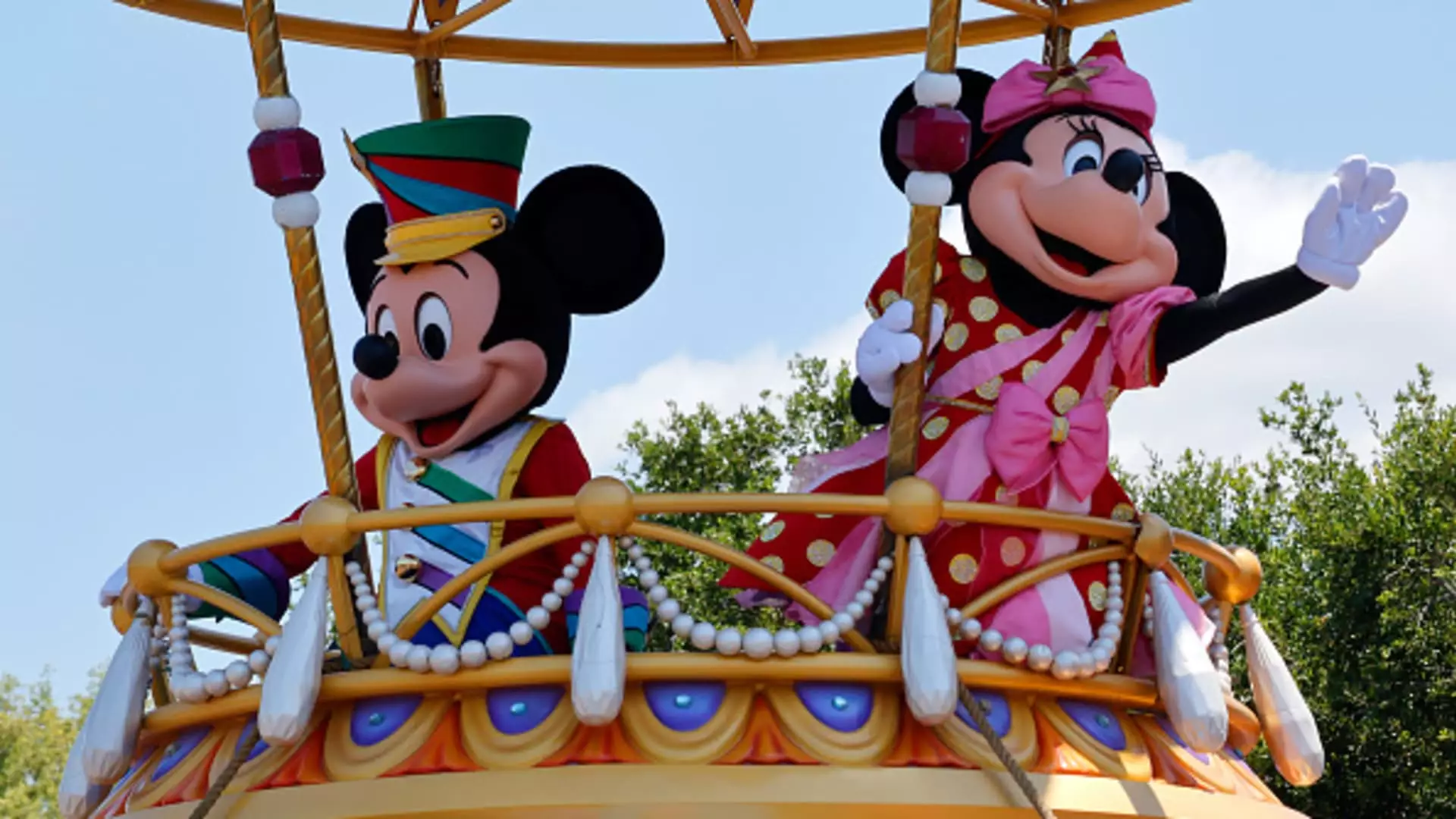Disney’s recent financial performance has become a topic of discussion among investors and analysts alike, signaling a strong hold within the entertainment industry. After a period marked by cost-cutting measures and a fundamental reevaluation of its streaming strategy, CEO Robert Iger seems to be steering the company back on track. This resurgence is anchored in impressive fiscal results announced in the fourth quarter, which not only met but exceeded market expectations.
In its latest quarterly earnings report, Disney reported a total revenue of $22.57 billion, outshining the consensus estimate of $22.45 billion. This remarkable achievement highlights the effectiveness of the management’s strategic initiatives. Furthermore, Disney registered an impressive adjusted earnings per share (EPS) increase of 39% year over year, reaching $1.14 against the anticipated $1.10. This strong performance fueled a 10% surge in Disney’s stock price, showcasing renewed investor confidence.
The company’s ability to generate substantial cash flow has also been highlighted in this report. More importantly, the profitability of Disney’s direct-to-consumer streaming unit surpassed expectations, positioning the company favorably within a competitive landscape filled with formidable rivals such as Netflix and Amazon Prime. As the media landscape becomes increasingly saturated, Disney’s adeptness at monetizing its content across various platforms appears to be a game-changer.
Disney’s focus on creating multiple avenues for revenue generation has provided a solid foundation for its successful quarter. CEO Iger emphasized in the earnings call that “a successful Disney movie today drives more value than it ever has in the past.” This assertion stresses the expansive reach of Disney’s content, which can now translate into revenue from streaming, theme parks, cruise lines, and merchandise sales. The interconnectedness of these revenue streams creates what Iger describes as a “multiplier effect,” thereby strengthening the company’s overall economic structure.
The company has positioned itself to not just rely on box office revenues, as traditional studios often do, but instead capitalize on a multi-platform strategy that maximizes profit from each successful franchise. This proactive approach reflects a deeper understanding of audience engagement and the modern consumer’s habits.
Disney has much to look forward to in terms of upcoming projects and products. The company has unveiled an exciting slate of film releases scheduled for 2025, including highly anticipated titles such as “Captain America: Brave New World,” “Lilo and Stitch,” and “Avatar: Fire and Ash.” By leveraging its iconic intellectual properties, Disney appears poised to captivate audiences once again.
Additionally, the anticipated launch of the ESPN direct-to-consumer streaming service in the fall of 2024 is indicative of Disney’s innovative approach to entering new markets and expanding its audience base. This service will integrate live sports and studio programming, coupled with advanced technology features, such as an AI-driven personalized sports experience. The combination of sports broadcasting and technology could redefine viewer engagement in the sports arena.
Looking at the projections laid out by management, it is clear that Disney is not merely resting on recent successes but is instead working diligently to sustain and escalate growth. The guidance for 2025 suggests an earnings growth rate in the high single digits, notably higher than the market’s expectations of around 4%. Furthermore, with projected operational cash flow expected to rise significantly, Disney’s financial health is looking robust.
Investors are especially keen on the anticipated expansion projects at the company’s theme parks and the addition of new Disney cruise ships. Both are expected to significantly boost attendance and spending. Additionally, Disney plans to invest around $3 billion in share repurchases—showing a commitment to returning value to shareholders.
Disney’s turnaround reflects not only successful financial maneuvers but also a critical response to the challenges posed by a rapidly changing entertainment market. With a promising slate of content and innovative strategies to engage consumers, Disney is carving a path towards sustained growth. As it continues to explore new revenue opportunities and enhance its established offerings, the outlook for Disney remains decidedly optimistic.
Disney’s recent success story underscores the importance of strategic adaptability in the entertainment sector and serves as a reminder of the company’s lasting appeal. The trajectory seems promising, and for investors, this might just be the moment to capitalize on Disney’s resurgence in the industry.

